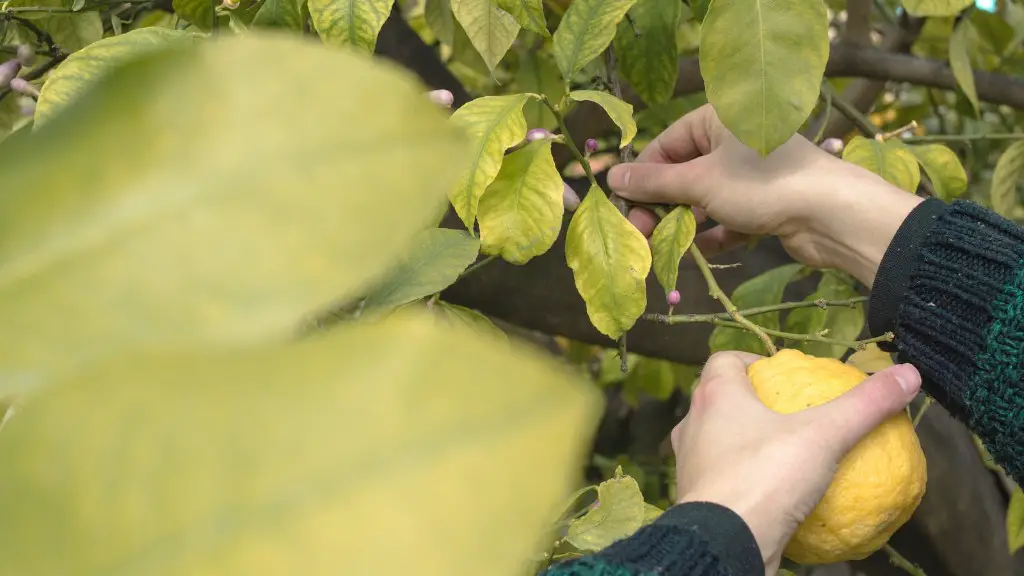Why Are The Tips Of My Palm Tree Brown
The sight of brown tips at the end of a palm tree’s leaves is disheartening. Fortunately, this problem is preventable and solvable in most cases. There are several reasons why tips of palm trees become brown, from nutrient deficiencies to environmental factors. Understanding the causes and treatments for brown palm tips can help the tree prosper.
Environmental Causes
Environmental conditions such as temperature, humidity, and light can cause browning of the ends of palm leaves. Low temperatures can cause cold injury, leading to necrotic spots on the leaves. High temperatures and low humidity can cause desiccation, or evaporative injury, to the leaves. Too much light or sun can also cause burning of the leaves, leading to brown tips. Balancing the climate around the palm tree can help restore tip health.
Nutrient Deficiencies
Nutrient deficiencies can also be a cause of brown tips. Potassium and magnesium are particularly important for the health of a palm tree and deficiencies can cause browning of the tips. As palm trees take up nutrients from soil, it could mean that the soil nutrient content is low. Adequately fertilizing the soil can help strengthen the tree and restore the green of its leaves.
Water Neglect
Failing to water palms enough is another common reason for their demise. Palm trees need abundant water, about twice per week during growing season and once per week during dormant season. If water is not supplied, the tips of the leaves will turn brown from dehydration. Regular watering is essential to keep the tree hydrated.
Pest and Disease Damage
Pests and diseases can also cause discoloration of the palm leaves. Common pests such as scales, mealybugs, and thrips can lead to brown tips and leaf spotting. Additionally, fungal and bacterial diseases can cause necrotic leaf tips and browning. Treating the pest or disease infestation with the right pesticide can help cure the condition and restore the tree. As with any pesticide, following the instructions in the label is key to prevent harm.
Damage Caused by Cultural Practices
Cultural practices such as pruning, fertilizing and trimming can also lead to brown tips. Pruning and trimming should be done carefully, taking care to avoid damaging the leaflets. Additionally, fertilizer should be applied sparingly and evenly around the tree, to avoid overfeeding and burn leaves. Following the right cultural practices can prevent brown tips.
Restoring Brown Tips in Your Palm Tree
Brown tips on a palm tree can be prevented and cured by understanding and following the guidelines above. Inspecting the environment around the tree, soil nutrient content, and pest infestations can help diagnose the problem. Taking the necessary steps to restore the tree’s health will ensure it’s future for many years.
Identifying Diseases Affecting the Health of Palm Trees
Diagnosing diseases in palm trees is key to curbing their effect on the tree. Diseases such as Trachyosporium fungus, Ganoderma butt rot, and Fusarium leaf spot can all lead to discoloration and brown tips. Inspecting the tree for symptoms of disease, such as deformed tips, yellow or black spots on the tips of leaves, and marshy or water-soaked lesions, will help identify the disease and allow for proper treatment.
Understanding the Origin of Palm Tree Diseases
Understanding the causes of different palm tree diseases can help avoid future problems. Most palm tree diseases arise from poor cultural practices such as watering too much or too little, pruning in the wrong way, or using too much fertilizer. Keeping an eye on the environment and following the right cultural practices can help prevent onset of different palm tree diseases.
Creating an Ideal Environment for Palm Trees
Creating the ideal growing environment for a palm tree is essential for its health. The ideal environment should have temperatures ranging from 65 to 95 degrees Fahrenheit, and 30 to 50 percent relative humidity. Adequate ventilations is also essential, to limit the moisture around the palm tree. Finally, given their tropical origin, protecting the tree from cold temperatures should be a priority.
Diagnosing and Treating Pest Related Problems in Palm Trees
Pests can cause severe damage to palm trees, leading to browning of the tips and dying of the leaves. Diagnosing a pest-related problem can be done by looking for the tell tale signs of a pest infestation such as necrosis on the leaves or brown streaks. Applying the right pesticide can be a key step in treating the tree and restoring its health.
Identifying Nutrient Deficiencies in Palm Trees
Nutrient deficiencies in palm trees can cause yellowing of the leaves and browning of the tips. Testing soil pH and nutrient content can be key in understanding their cause. Applying fertilizer on a regular basis, and making sure it has the essential macro- and micronutrients, can help balance and enrich the soil, helping the tree restore its health.


